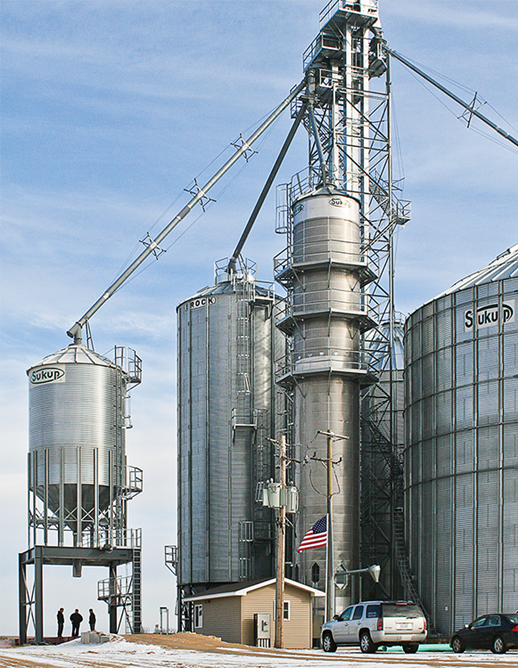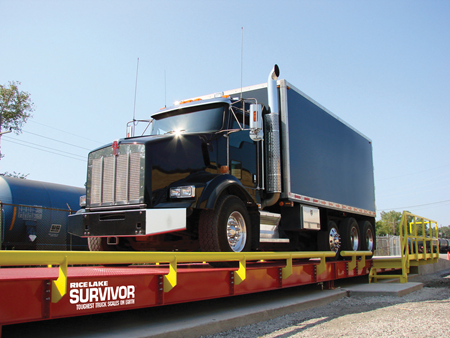Is the website displaying in the correct language? Please confirm or select a different language.
Your region has been set automatically. Please confirm or select a different region.

Turning Grain Dust Into Gold
Grain fields in eastern Illinois and Wisconsin stretch as far as the horizon in all directions. Towering clusters of bins and elevators pinpoint the super-sized grain facilities at rail stops and small towns. All is quiet—until harvest when the dust hits the wind.
Grain fields in eastern Illinois and Wisconsin stretch as far as the horizon in all directions. Towering clusters of bins and elevators pinpoint the super-sized grain facilities at rail stops and small towns. All is quiet—until harvest when the dust hits the wind.
For years, grain terminal operators have invested in safety equipment and training to protect their personnel and property from combustion caused by flying fibers or “flyings,” more commonly known as dust. Of all types of dust explosions, those associated with grain dust are the most common and the most dangerous. Any time grain is moved, processed, or stored, potentially combustible dust is generated and suspended in the air. In confined spaces like elevators and dryers, ignition sources are always present.
Even outdoors, grain dust creates serious air pollution. When fleets of hopper-bottom semi-trailers are unloading 1,200 bushels of grain every 11 minutes, day and night, clouds of dust can envelop the scale house and equipment and coat drivers’ throats. Dust control is also a concern because the area around grain-handling facilities must meet air-quality standards mandated by state and federal guidelines.
One of the issues encountered when confining dust in grain-handling applications is the effect confinement devices can have on weighing equipment. Many confinement systems directly contact weigh hoppers, truck scales, conveyor scales, and bagging scales. This contact can increase potential errors with weighing-system
accuracy if implemented improperly.
Jay Garnhart, Cream City Scale LLC, wanted to integrate the Lowry Manufacturing Company dust-collection system with Rice Lake SURVIVOR® grain-dump scales. The Lowry system is inserted into the underground pit. There, it pulls the proper volume of air from the pit to capture particles and return them to the grain stream.
Jay says, “I call it a ‘sock.’ It’s a mesh lining that fits above the hopper and below the scale.” The ingenious part is the way the sock is attached to the scale. “There is enough play so the load cells can be quickly accessed, and the sock won’t affect the accuracy of the scale.” Before the idea developed, scale techs attached the two systems in a way that made weighing components like load cells inaccessible—unless separated.
The sock fits like a glove. The interface of the sock to the hopper is airtight, capturing grain dust along the entire stream from hopper to pit. The sock also prevents fugitive dust from building up on bearings, motors, and other peripheral equipment near the grain-handling system. Cleaner, safer, more efficient.

At the Gensler Grain Farm operation near Rochelle, Illinois, efficiency is a top concern. For farmers working overtime to bring in their crops, safer and more expedient unloading of corn, soybeans, and other products represents a significant savings in time, equipment, and expense. Jim Gensler, of Gensler Grain Farm, reports that the combination of the SURVIVOR® OTR single-pit grain-dump truck scale and Lowry dust-collection equipment has enabled him to operate with one fewer semi-truck and hire one fewer driver each season. Drivers can fully open the gates on their trailers, and the system takes the grain away as fast as they can unload it.
Jim also realized another advantage with this system. He installed overhead bins to fill shipping containers on the truck while the truck is on the scale. Properly loading the containers is essential because freight companies will not accept overloaded containers. Jay Garnhart explains the advantage, “With this overload system design, drivers can drop excess weight loaded into the container back into the grain dump without leaving the scale. Can you imagine the time that saves? Instead of leaving the scale to dump the excess and returning to the scale to be re-weighed, they can stay on the scale in their cab, re-weigh, and go. The SURVIVOR is their giant checkweigher!”
Jim Gensler agrees, “When we’re loading containers for ships, they have to be exact, or they will be rejected—there is no wiggle room.”
S&S Grain Farm near Madison, Wisconsin, has a gleaming new grain facility with a dual-dump SURVIVOR OTR truck scale, installed by Cream City Scale. With two 6- by 7-foot openings, each pit is lined with finely tailored socks, thanks to Jay’s innovation.
Dick Schroeder, proprietor, reports, “It’s smooth. We just pull on, go in the scale room, punch a ticket, come out, and open everything up. We can unload 8,000 bushels an hour. It takes 9 to 11 minutes from the time we punch in to the time we punch the scale out to run 1,200 bushels off a truck. We’ve hauled over a 1000 loads over it. We can leave here at 79,980 [pounds] not counting a driver, go to the DOT scale, and be right on. We do load right at 80,000, so it’s nice to know for sure. You don’t have to guess.”
Subscribe to Rice Lake Magazine
Sign in or create a Rice Lake website account to request a Rice Lake Magazine filled with application stories like this one be sent to you.
Account Sign In Create an Account


 My Account
My Account
